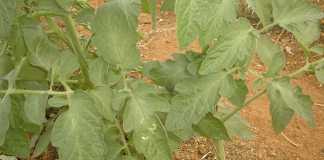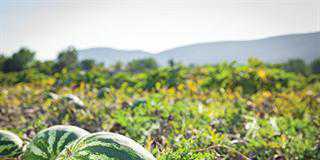Some years ago, a colleague and I visited a farmer who’d planted a new, high-yielding mild onion variety. He gave each of us a bag to take home.
My family finished the bag in a week as the onions were so sweet and delicious that we ate them with everything possible. Not only did my colleague do the same, the onions ended up on his braai as well.
Clearly, such an onion could be promoted to increase sales and consumption. However, this particular variety failed because it was rather susceptible to bolting.
A lot of variables which aren’t a factor with other vegetables apply to onions, and many growers have come a cropper because they didn’t understand them. Just changing to another variety, even after much experience with the present one, can be a disaster.
I’ve come across very successful onion farmers who became very wealthy by growing this crop, but who had no idea that simply changing the variety to which they were accustomed could jeopardise their production.
With onions, it’s important to stick to what you know and make any changes gradually over a few seasons.
Developed over centuries
The history of onions is uncertain, but many believe they originated in Asia. Onions have been used as food and medicine for as far back as records go.
To the ancient Egyptians the onion, with its concentric layers, represented eternal life.
As with any crop with such a long history of cultivation, many different varieties and adaptations were developed to suit various climates and palates. The fact that onions could be used at an immature stage and had long storage life added to their early popularity.
The taste and versatility, of course, also made a good impression. But this variability is a snare to those who do not understand onions.
This crop responds to day length and over the centuries has been selected to bulb at different latitudes. A variety bred for adaptation to northern areas with long days wouldn’t attempt to bulb in the tropics or even near Johannesburg.
Many varieties that grow in the Southern Cape, which is classified as an intermediate day length area, would not bulb on the Highveld. To complicate matters further, within each day length category, varieties have been bred to mature earlier and later to provide the convenience of progressive lifting and to extend marketing potential.
Breeding takes off
There are now many thousands of varieties available. The US’s Dr Henry Jones discovered a male-sterile variety that enabled us to make hybrids commercially, speeding up the development of new varieties and also raising yields due to hybrid vigour.
Onions come in a range of colours, from pure white to yellow, straw, brown and red. The red can apply to the outer skin only or to each ring within the onion, which looks very attractive when sliced and is thus popular for salads.
The colour requirements for onions vary from country to country. Many countries require a fairly high percentage of red onions, though these only represent a small, but growing, fraction of the market in this country. Many recipes call specifically for red onions.
White onions aren’t popular here but are quite acceptable in many countries. They are favoured for pickling because they look more attractive in the bottle. Strangely enough, for dehydration, white onions are almost universally favoured.
There is also a huge difference in pungency between varieties and categories. Pungent onions generally have a far longer storage life than mild ones. Many mild onions also have a sweet taste and some breeders are specifically breeding for this.
There are individual preferences for pungency and sweetness. The use you have in mind may also determine the choice of variety.
As onions are an important commercial crop worldwide, breeders are making improvements to provide increased yields, disease resistance, storage qualities and appearance. We need to exploit these developments but not be tempted to rush in too quickly, or in a year when the climatic conditions cause the new variety to fail. With onions, changes should be made gradually.
Contact Bill Kerr on 016 366 0616 or email [email protected].
Caption:
Coloured onions have limited demand in SA. White varieties are used virtually exclusively for pickles and dehydration but red ones are slowly gaining ground. Onions with internal red rings are preferred for garnishing.
BILL KERR













